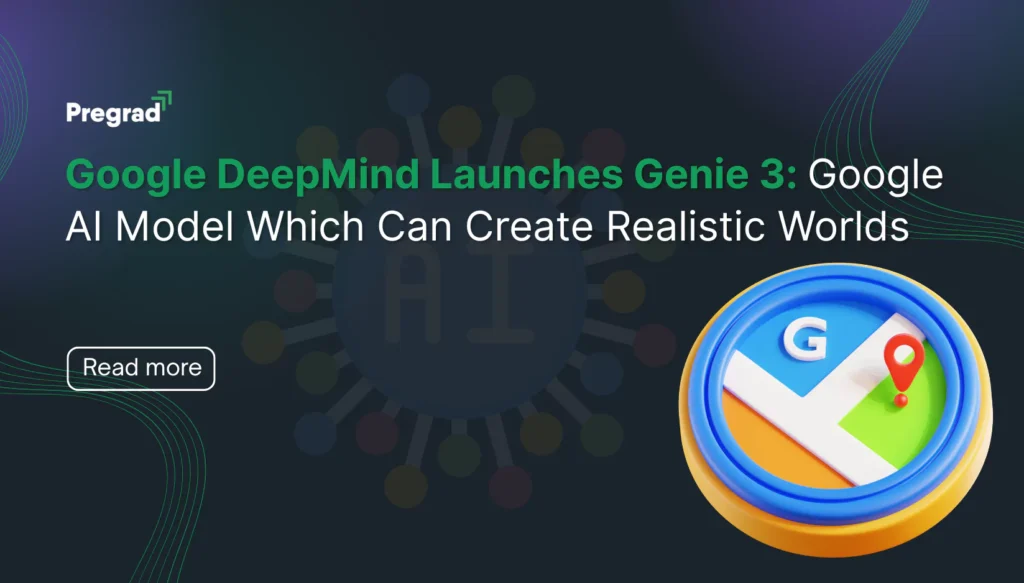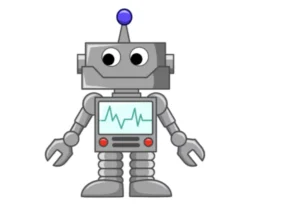Google AI Model: Google Deepmind launched Genie 3 on August 5, 2025. This model not just generates images or videos, it creates playable worlds where agents and users can walk, look around, interact and even change the environment on command. World models like Genie 3 are created to generate digital environments just by giving a prompt.
Genie 3 is a huge advancement as users will be able to generate worlds with a prompt that supports a few minutes of continuous interaction which was only 10-20 seconds in the Genie 2 model. This blog will cover all the details about the launch of Genie 3, explaining the features and limitations of this newly launched Google AI model, comparison between Genie 3 and the previously launched models.
Table of Contents
What is Genie 3?
Genie 3 is a third generation model ‘world’ model which can generate a 3D world while being interactive at the same time. Unlike traditional models which created static images or short video clips, Genie 3 is an advanced version which can generate dynamic and playable scenes where users or AI agents can move around, explore and interact just like they are inside of a video game.
According to the researchers of DeepMind, Jack Parker-Holder and Shlomi Frutcher,
| 🔍 Genie 3 can generate environments that an agent can actually explore, interact with and learn from in real time. |
Genie 3 is a massive leap from the previous Genie 2 model, many updates and modifications have been done before the introduction of this new Google AI model, also called the ‘world’ model.

This combination of real-time generation, persistent memory, and user driven editing makes Genie 3 a powerful tool not just for gaming but also for creating educational simulations.
| 🔍 Just imagine typing a simple prompt like “Being in a Formula 1 Race tournament with a valid ticket” and now you are actually entering into a 3D environment with the descriptive details of your prompt featuring an actual Formula 1 3D environment where you can walk, explore and interact easily on command. |
Key Takeaways For Google AI Model Genie 3
- Genie 3 is a Google AI Model can generate 3D worlds easily with simple text prompts.
- Suppose you provided the prompt “create a playable 3d environment, you will get a 3d interactive environment which you can easily explore with simple movement controls.
- The model is expected to have recreation capacities of 24 frames per second with consistent 720p for a few minutes.
- Genie Google AI model supports consistent interactions for a few minutes unlike its earlier version which used to last only for 20-30 seconds.
What Can Genie 3 Do?
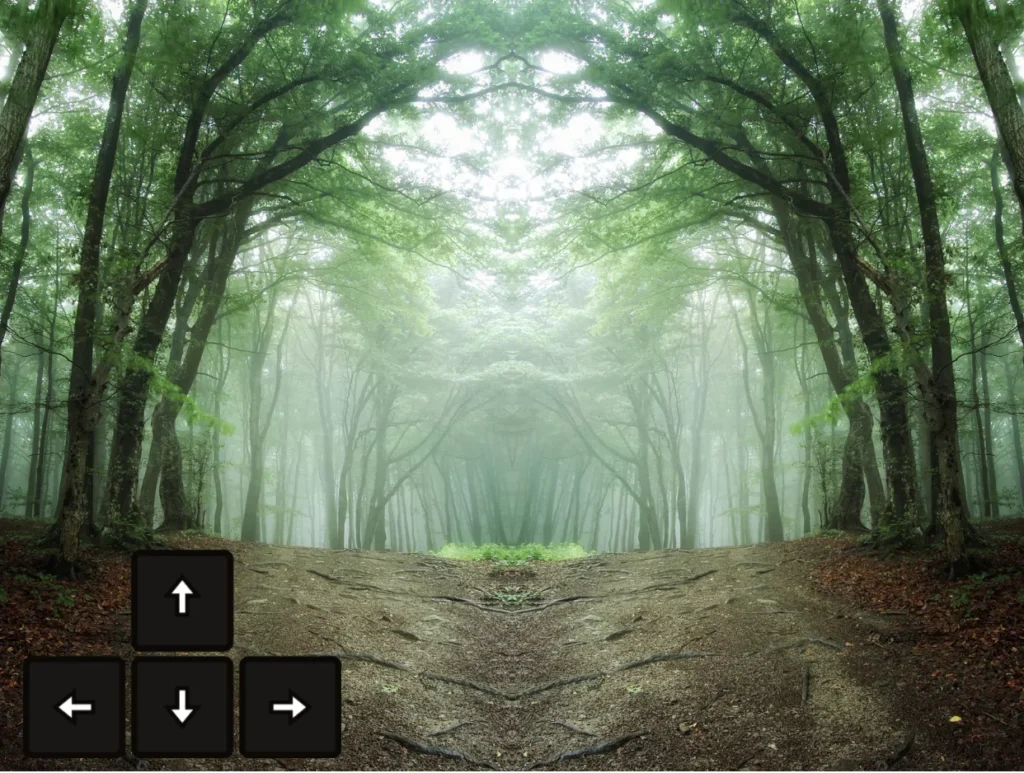
Genie 3 is an AI ‘world’ model which can create real-time interactive videos based on the text prompt given. It is different from other large language models in its ability to understand 3D environments. However, Genie 3 is not officially released for personal or commercial use but Google DeepMind officially shared some of the real time interactions from Genie 3.
Physical Properties of the World
You can experience natural phenomena like water, lighting and complex environmental interactions. You just have to enter the text prompt and Genie 3 will generate the video.
| Click here!! to have a look at what Genie can generate. |
Animation and Fiction
Genie 3 can create animated and fictional content by just giving one simple text prompt. It can create fantastical scenarios and fictional animated characters and much more. You can visit the official blog page of Google DeepMind to check out what else Genie can do.
Genie 3: Creating Dynamic Worlds That You Can Navigate In Real-Time [YouTube]
Can You Use Genie 3 Today?
A new Google AI model Genie 3 was launched on 5th August, 2025 by Google DeepMind but it is not officially out for personal, commercial or developer use. As per the reports, still some research is going on and it is still a research project by Google Deepmind.
| 🚀 Prompt: Fast tracking real world video following a jellyfish swimming at high speed through the darkness of the deep sea between canyons covered in densely packed vent mussels with tiny white crabs crawling on them. Blurry hydrothermal vents in the distance spew thick, billowing plumes of vibrant blue, mineral-rich smoke from glowing rocky structures. Very dark, dim deep sea lighting, particles float in the cloudy ocean. |
Currently, no public API, platform or demo is available to try the working of Genie 3. You can stay updated and keep checking the updates as Google DeepMind may soon roll out Genie 3 for commercial as well as developer use.
Read More: Gen-AI Powered Tata Virtual Internship : Certificates to All Applicants
Current Limitations Of Genie 3
Genie 3 is officially launched but there are certain limitations in the Google AI model. It is important to acknowledge the current limitations of Genie 3 Google AI model.
- The action space is limited which means that the actions that the agents can perform directly is currently constrained.
- Correctly modeling interactions between agents is still an ongoing challenge in Genie 3.
- Genie is currently not able to create real-world locations with perfect geographical accuracy.
- Clear text will only be generated when you have provided it in the input world description.
- The model can support the continuous interaction of just up to a few minutes which will be looked upon in the future.
Read More: Elon Musk To Launch Strong Starlink India By End of 2025: Is Your Internet Ready For A Revolution?
Comparison Between All The ‘world’ AI Models
DeepMind has launched multiple Google AI models starting from GameNGen, Genie 2, Veo, Veo2 and 3 and now Genie 3 which are used for different purposes and each has its own specifications. GameNGen was the first model launched by Google DeepMinds followed by Genie 2 and Veo.
As the introduction of models kept increasing, the modifications and specifications also got better. Google DeepMinds has officially shared some of the information comparing the 4 different Google AI models.
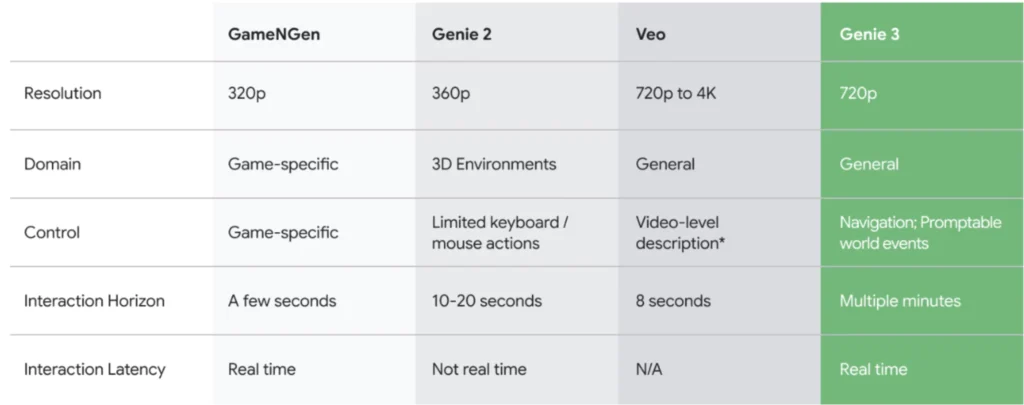
Some of the additional parameters on the basis of which we can compare the different AI world models are listed in the below table.
| GameNGen | Genie 2 | Veo (1,2 and 3) | Genie 3 | |
| Announcement / Launch date | November 1, 2024 | December 6, 2024 | May 14, 2024April 15, 2025May 20, 2025 | August 5, 2025 |
| Availability | Research only | Internal / Research (not public) | Available on Gemini AI Pro since 2025 | Not yet public (research only) |
Summary:
- GameNGen: First attempt of converting text into simple playable games.
- Genie 2: Generated 2D worlds but only for research, it was not made available to the public.
- Veo: It focuses on videos not games.
Read More: Ghibli Image Alternatives: Better Images than Ghibli Styles using ChatGPT
Which AI Model Is Best For You To Use?
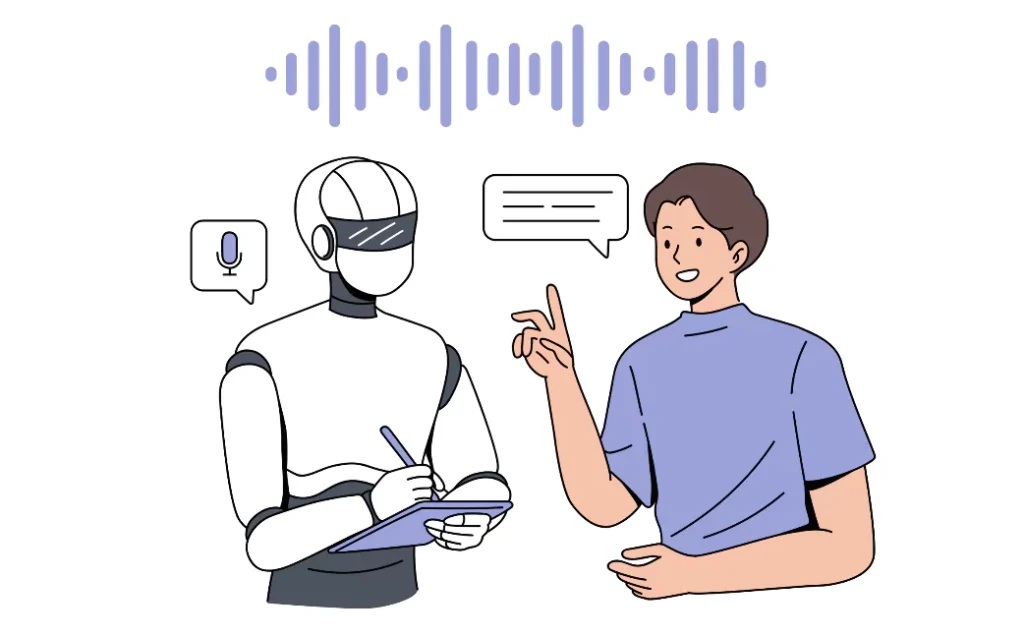
Every AI model has unique features and is appropriate to use depending on the purpose of use. For different purposes, different tools are used to make the outcome more efficient and complete your tasks with the help of AI in a better way.
A list based on the purpose of usage is mentioned below, check out and make sure you use the right AI model according to your requirements. Google AI model came up with some major advancement in their approach. However, go for the model which suits your needs in the best way possible.
Read More: Check New Gemini Nano Banana Trend: Create 3D Figurine Image with Gemini
1. For Game Developers: GameNGen or Genie 3
| 🚀 Prompt: The video shows a first person perspective of someone navigating difficult terrain in the middle of a volcanic area. This is a real world video shot from the perspective of a wheeled robot that needs to traverse across a terrain. The vehicle has chunky offroad tires that crunch under the blackened rock. The camera is an egocentric camera mounted to the vehicle, and you can see the front tires just on the bottom of the camera along with the body of the robot. In the distance you can see smoke and lava flowing from the volcano. There are no other visible signs of life. There are lava pools that the agent is trying to avoid and random rock formations. The sky is a vivid blue. |
If you design games or you are a game developer and looking to build interactive, playable environments then your top picks should be:
- GameNGen: Although this Google AI model is not accessible to the public, it is conceptually strong for research-based game development.
- Genie 3: It is still in the experimental/research phase but it is ideal for building real time interactive 3D worlds with evolving memory.
Read More: Google Summer Internship 2026: Aspiring Software Engineers Apply Now!
2. For Filmmakers & Video Creators: Veo 3
| 🚀 Prompt: Walking on a pavement in Florida next to a two-lane road from one side and the sea on the other, during an approaching hurricane, with strong wind and waves splashing over the road. There is a railing on the left of the agent, separating them from the sea. The road goes along the coast, with a short bridge visible in front of the agent. Waves are splashing over the railing and onto the road one after another. Palm trees are bending in the wind. There is heavy rain, and the agent is wearing a rain coat. Real world, first-person. |
If you are a filmmaker and want to create videos with high cinematic quality then you just have to give the right prompt, you can use Veo 3 for generating videos.
- Veo 3: It is one of the best AI Models if you are generating video from text with audio, motion and 4K resolution. It is even accessible to the public which makes it perfect for content creators and marketing teams.
3. For Designers & Creative Coders: Genie 2
If you are a designer or coder, exploring the fields of static designing and playable worlds then you can check out Genie 2.
- Genie 2: Genie 2 lets you generate interactive environments from a static image or a sketch. It is good for 2D or simple 3D world generation. Although it is still experimental, it is good for creative developers, artists and educators.
4. For AI Researchers: Genie 3 or GameNGen
If you are someone who is studying AI agents, casual reasoning or world models then you go to AI models should be:
- Genie 3: It integrates memory, it can help you in research. It will be best for open-ended reasoning and planning.
- GameNGen: It is great for experimenting with AI-controlled environments. It helps in understanding how neutral agents can learn without rules or hardcoded engines.
Read More: ChatGPT OpenAI: Is OpenAI Launching ChatGPT-5? New AI Model Coming this Summer!
5. For General Users or Early Creators: Veo 3
If you create videos just as a hobby or you are a student thinking of exploring this field, then Veo 3 is the best tool you can use.
- Veo 3: Veo 3 is available via Gemini Advanced in many countries including India. It is easy to use, just type the prompt and it will generate a video with sound and cinematic quality. Even no programming or setup is required.
Upskill with Pregrad🚀
Genie 3, a new Google AI model has been launched and it is clear that AI is going beyond just text and images, it can now create full 3D worlds with which you can interact and explore. This means that there will be huge demand for the people who have the knowledge of AI and understand Artificial Intelligence.
With Pregrad, you can learn various AI related and other courses according to your interest in the domain.
Whether you are a student or someone just curious to learn about AI, Pregrad is here to help you with its beginner-friendly programs like AI/ML, Data Science and Analytics, Cyber Security and many more.
Google AI Model FAQs
Q1. What is Genie 3?
Ans: Genie 3 is a newly launched AI ‘world’ model which can create a 3D world with just a simple text prompt.
Q2. What is the difference between Genie 3 and previous Google AI models like Genie 2?
Ans: Genie 3 has improved in terms of consistency, it runs at 720p and 24fps. It will have longer memory with an option to edit environments and agent movements.
Q3. Can I use Genie 3?
Ans: Genie 3 is not officially launched yet for public use. It is still for research and experimental purposes only.
Q4. Can Genie 3 create realistic worlds?
Ans: Yes, Genie 3 can create worlds which look exactly like real environments with detailed textures, lighting and layouts. However, it is not optimized for replicating real world geographies.


